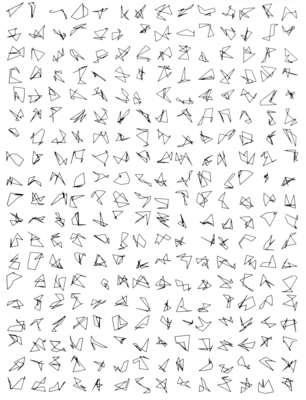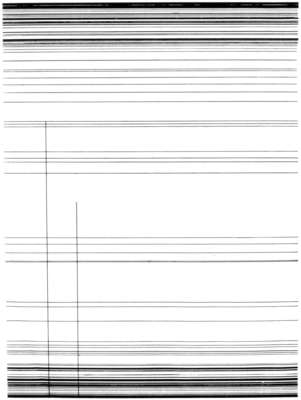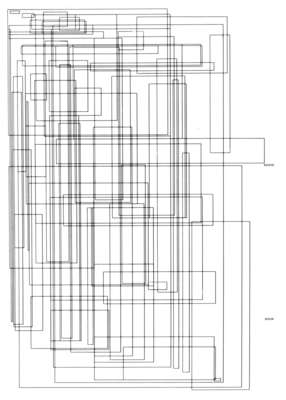Georg Nees: Computergrafik was the first exhibition world-wide of graphic works algorithmically generated by a digital computer at the Siemens company, Erlangen (Germany).
The show took place in rooms of the " Studiengalerie der TH Stuttgart " (later University of Stuttgart), under the auspices of the Ästhetisches Colloquium, a seminar permanently offered by Max Bense and his Institut für Philosophie und Wissenschaftstheorie. from 5 to 19, February 1965 (opening on 4 Feb.). This was two months before the famous Howard Wise exhibition in New York. It inspired the November 1965 exhibition at the Galerie Wendelin Niedlich in Stuttgart.
Currently, it remains a bit uncertain what the actual title of the exhibition was. The version we have chosen is most likely the correct one. Georg Nees was the only artist represented. The works he had on display were generated by a digital computer properly programmed. Only a few years later, Georg Nees himself began to call his works generative Computergrafik (this is also the title of his doctoral dissertation).
On the issue of priority see, however, Joan Shogren: San Jose show 1963
Upon a suggestion by Helmar Frank, Max Bense had invited Nees to show his graphic works at his experimental gallery at University of Stuttgart. The gallery was concentrating on concrete art (text, graphics, typography), and similar movements. Algorithmically generated drawings were the most natural and consequential continuation of what Bense’s radical rationalism called for.
At the occasion of the opening of the exhibition, Bense and Nees published issue no. 19 of the series of brochures collectively known as rot. This small booklet became one of the first, if not the first, publication in the field of computer art. It contains several of the drawings Nees exhibited in the show, together with short but precise pseudo-code. Bense wrote his short text, Projekte generativer Ästhetik, that may today be considered the manifesto of computer art. It has been translated and published in English.
Georg Nees himself does not remember the title of the exhibition nor the number and selection of works he put up on the walls. His estimate is ten to twelve small-sized graphics. (They are among those now in possession of Kunsthalle Bremen.)
A number of artist-professors from the Stuttgart Staatliche Akademie der Bildenden Künste attended the opening. One of them asked Georg Nees whether he could make his computer (a program) to draw the same manner the artist was drawing (“Duktus”). Nees’ answer is a classic. After a short hesitation he replied: “Yes, of course, I can do this. Under one condition: you must tell me how you draw.” – In the ensuing irritation, Max Bense spontaneously coined the word “Artificial Art”.






